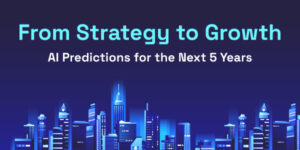What is ELT?
ELT (Extract, Load, Transform) is a data integration process that has gained great importance in modern data handling and analytics. This is an evolution from the traditional ETL (Extract, Transform, Load), which follows a reverse order of operations.
In ELT, the first step involves extracting data from different sources before loading it onto one central storage system and finally transforming it into an analysis-friendly format. It has several advantages compared to traditional ETL, especially when dealing with big data sets effectively and adapting to business changes.
Key Components of ELT
- Extract: The extraction phase entails obtaining information from various sources such as databases, web services, and spreadsheets. It is critical to ensure that all relevant data is captured during this stage to not miss any important aspects necessary for analysis.
- Load: The load phase involves transferring the extracted data into a central storage system like a data warehouse. The choice of storage solution is critical in ELT because it directly affects its performance and scalability.
- Transform: During the transformation phase raw information must be put in proper format that can enable it to be analyzed properly. The latter depends on such different actions as aggregating or filtering, cleansing etc., whose aim is just to make sure that the given statistics are accurate and ready for usage.
Process Flow in ELT
ELT process involves the following steps:
- Data Extraction: This stage involves using tools such as SQL-based systems and cloud warehouses like Snowflake or BigQuery, as well as other Data Integration Tools to facilitate retrieval of data from various sources.
- Data Loading: The tools used for this stage include SQL-based systems, cloud warehouses, or even Data Integration Platforms, among others, to enable the transfer of extracted records to any centralized repository, for instance, a Data Warehouse.
- data-contrast=”none”>Data Transformation: This stage involves aggregating, filtering out redundant records, and data cleansing the loaded data to convert it into an easily analyzed format.
- Scheduling and Automation: It constantly updates and analyzes the information flow.
Advantages of ELT
- Performance: There are several reasons why modern business intelligence applications use Extract-Load-Transform rather than traditional Extract-Transform-Load techniques, even though both involve facilitating performance. It can achieve query acceleration mechanisms by taking advantage of parallel processing architectures.
- Flexibility: ELT is very flexible with changes in industry requirements; it allows for modifying transformations without extracting them again.
- Cost Efficiency: Using cloud infrastructure-based ELTs reduces firms’ costs, as they do not need to maintain expensive hardware and infrastructure.
- Scalability: ELT always ensures an efficient and effective DI&A process regardless of the incremental rise in the volume of data, hence leading to scaling up.
Use Cases & Applications
ELT offers prompt data uploading and effective data conversion, making it ideal for data warehousing.
- Business Intelligence: ELT makes it easier to derive insights from the information by providing a flexible and scalable process of integrating data.
- Data Integration: ELT unifies the data of different departments, resulting in a common understanding of operations and enabling organizations to make decisions based on them.
- Machine Learning and AI: To support model training and predictions, ELT provides a scalable and efficient integration process for machine learning and AI applications.
Challenges of ELT
- Data Quality: Data quality assurance remains one of the significant bottlenecks in ELT, involving ensuring both precision and usefulness.
- Security: During this loading process, where confidential information must be handled, sensitive information must be ensures safety.
- Skill Requirements: Setting up an ELT pipeline requires specialization, particularly in skills required for processes like integration or transformation.
ETL tools and software
ETL can extract, load, or transform your data using different tools. However, some tools cover all these steps while integrating those into just one place called ETL/ELT. When choosing an ETL tool, users should identify whether they can read multiple sources, including what they are using now and any future sources their company may adopt.
Most tools support source/target database systems and files compatible with many types. Some may look for tools that can do both ETL and ELT, as it is possible to require both in the future.
Today, there are several market leaders such as IBM, Informatica, Microsoft, Oracle, SAS, Talend, Teradata, etc.,
Data Store helps manage the target data market, data warehouse, and/or data lake. NoSQL DMS and Hadoop are good candidates for an ELT approach, as are purpose-built DW appliances. In some situations, a classic relational DBMS will be relevant in practice.
Conclusion
ELT has redefined modern data management by offering a customizable, scalable, and efficient method for integrating data. The size of data is increasing dramatically, making ELT critical in handling big datasets and supporting decision-making based on them. Emerging trends such as real-time ELT and cloud-native ELT are expected to further enhance the capabilities of ELF, thereby making it an essential tool for businesses seeking competitive advantages from their respective databases.
Share this glossary

